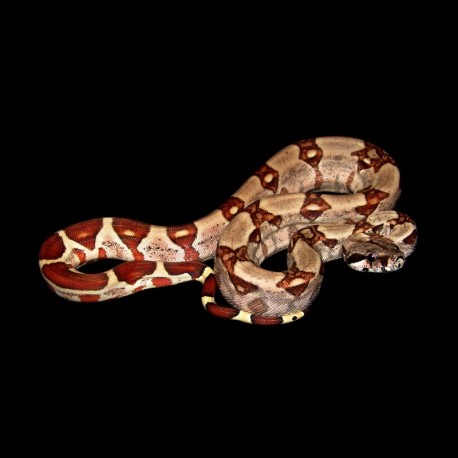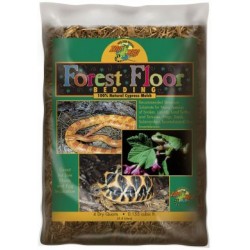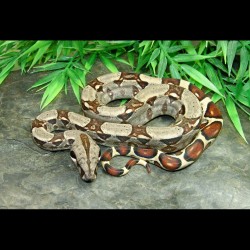No Products
 View larger
View larger Colombian Red Tail Boas - Salmon (Babies)
Salmon Colombian Red Tail Boas (Boa constrictor imperator) are virtually Hypos, in that they lack varying degrees of melanin (black pigment). However, Salmons are a specific blood strain that shows much more pink/salmon coloring throughout the entire body.
This product is currently out of stock
More Info
Colombian Red Tail Boas (Boa constrictor imperator) A large, heavy-bodied species of snake. It is a member of the Boidae family found in Central America, South America and some islands in the Caribbean. A staple of private collections and public displays, its color pattern is highly variable yet distinctive. Ten subspecies are currently recognized, although some of these are controversial.
Size and Weight
Though all boids are constrictors, only this species is properly referred to as "Boa constrictor"; an almost unique instance of an animal having the same common and scientific binomial name. (The distinction is shared with Tyrannosaurus rex.) All subspecies are referred to as "Boa constrictors", while the nominate subspecies, B. c. constrictor, is often referred to specifically as the "red-tailed boa". Within the exotic pet trade it is also known as a "BCC", an abbreviation of its scientific name, to distinguish it from other Boa constrictor subspecies such as the Boa constrictor imperator which is also regularly, and erroneously, referred to as a "red-tailed boa".
The Boa constrictor is a large snake, although only modestly sized in comparison to many other larger snakes such as the reticulated and Burmese python, and can reach lengths of anywhere from 1-4 meters (3-13 feet) depending on the locality and the availability of suitable prey. There is clear sexual dimorphism seen in the species with females generally being significantly larger, in both length and girth, than males. As such the average size of a mature female boa is between 7-10 ft, whilst it is only 6-8 ft for the males. It is common for female individuals to exceed 10 ft, particularly in captivity, where lengths of up to 12 ft or even 14 ft can be seen. A report of a Boa constrictor growing up to 18½ ft (5.5m) was later found to be a misidentified green anaconda. The Boa constrictor is a heavy bodied snake, and large specimens can weight up to 27 kg (60Ibs). The size, and weight, of a Boa constrictor is dependent on subspecies, locale and the availability of suitable prey. As such there are several populations of Boa constrictors that are known as "dwarf boas", such as the B.c. imperators seen on Hog Island. These smaller subspecies are generally insular populations. Boa constrictor constrictor itself reaches, and occasionally tops, the averages given above, as it is one of the relatively large subspecies of Boa constrictor. Other examples of sexual dimorphism in the species include the fact that males generally have longer tails to contain the hemipenes and also longer cloacal spurs, hind leg remnants, which are used to grip and stimulate the female during copulation.
Coloring
The coloring of Boa constrictors can vary greatly depending on the locality, however they are generally a brown, grey or cream base color that is patterned with brown or reddish brown "saddles" that become more pronounced towards the tail. It is this coloring that gives Boa constrictor constrictor the common name of "red-tailed boa" as it typically has more red saddles than other boa constrictor subspecies. The coloring works as very effective camouflage in the jungles and forests of its natural range. There are also individuals that exhibit pigmentary disorders such as albinism. Although these individuals are rare in the wild, they are common in captivity where they are often selectively bred to make a variety of different color "morphs". Boa constrictors have an arrow-shaped head that has very distinctive stripes on it. One runs dorsally from the snout to the back of the head. The others run from the snout to the eyes and then from the eyes to the jaw. Boa constrictors can sense heat via cells in their lips, though they lack the labial pits surrounding these receptors seen in many members of the boidae family. Boa constrictors also have two lungs, a smaller (non-functional) left and enlarged (functional) right lung to better fit their elongated shape, unlike many colubrid snakes which have completely lost the left lung.
Geographic Range
Dependent on subspecies Boa constrictor can be found from northern Mexico through Central America (Belize, Guatemala, Honduras, El Salvador, Nicaragua, Costa Rica and Panama) to South America north of 35°S (Colombia, Ecuador, Peru, Venezuela, Trinidad and Tobago, Guyana, Suriname, French Guiana, Brazil, Bolivia, Uruguay and Argentina). Also in the Lesser Antilles (Dominica and St. Lucia), on San Andres, Providencia and many other islands along the coasts of Mexico and Central and South America. The type locality given is "Indiis" -- a mistake, according to Peters and Orejas-Miranda (1970).
Habitat
Boa constrictor flourishes in a wide variety of environmental conditions, from tropical rainforests to arid semi-desert country. However, it prefers to live in rainforest due to the humidity and temperature, natural cover from predators and vast amount of potential prey. It is commonly found in or along rivers and streams, as it is a very capable swimmer. Boa constrictor will also occupy the burrows of medium-sized mammals, where it can hide from potential predators.
Behavior
Boa constrictors are solitary animals, and will only associate with conspecifics to mate. They are nocturnal, however they may bask during the day when night-time temperatures are too low. As semi-arboreal snakes, young boa constrictor individuals may climb into trees and shrubs to forage, however they become mostly terrestrial as they become older and heavier. Boa constrictors will strike when threatened, and will bite in defence. This bite can be painful, especially from large snakes, but is rarely dangerous. However, care must be taken to ensure that infection doesn't result from the injury. Specimens from Central America are more irascible, hissing loudly and striking repeatedly when disturbed, while those from South America tame down more readily. Like all snakes, Boa constrictors that are in a shed cycle will be more unpredictable. This is because the substance that lubricates between the old skin and the new will make the eyes appear "milky" or "opaque", and as such the snake cannot see very well. This will cause it to be more defensive than it may be otherwise.
Feeding
Prey includes a wide variety of mammals and birds. The bulk of their diet consists of rodents, but larger lizards and mammals as big as ocelots are also reported to have been consumed. Young Boa constrictors will eat small mice, birds, bats, lizards and amphibians. The size of the prey item will increase as they get older and larger.
Boa constrictors are ambush predators and as such will often lie in wait for an appropriate prey to come along at which point they will attack. However, they have also been known to actively hunt, particularly in regions with a low concentration of suitable prey, and this behaviour generally occurs at night. The boa will first strike at the prey, grabbing it with its teeth, it then proceeds to constrict the prey until death before consuming it whole. Their teeth also help force the animal down the throat whilst muscles then move it towards the stomach. It will take the snake approximately 4-6 days to fully digest the food, depending on the size of the prey and the local temperature. Boas that eat anything smaller than than medium rabbits need to be fed every week, or at-least every 11-14 days, if not feed within this period Boa constrictors will prepare itself to survive and actively hunt down its prey if it hasn't already, and will only live anywhere from a couple of days to 1-2 weeks, depending on the size of there last consumed meal, This also has a negative effect on there immune system. Although adult snake's may not eat for anywhere from a week to several months, due to its slow metabolism.
Reproduction and Development
Boa constrictors are ovoviviparous, giving birth to live young. They will generally breed in the dry season between April and August and are polygynous, thus males may mate with multiple females. A half of all females will breed in a given year, and a larger percentage of males will actively attempt to locate a mate. However due to the polygynous nature of Boa constrictor many of these males will be unsuccessful. The reasoning behind why many females do not breed in a given year is down to physical condition. Boa constrictor females invest considerable maternal energy in their offspring, due to the fact that they are ovovivparous. As such female boas without a good enough physical condition will be unlikely to attempt to mate, nor produce viable young if they do mate.
During breeding season the female boa will emit a scent from her cloaca to attract males, who may then wrestle for the right to breed with her. During breeding the male will curl his tail around the females and the hemipenes will be inserted. Copulation can last from a few minutes to several hours, and may occur several times over a few week period. After this period ovulation may not occur immediately, however the female can hold the sperm inside her for up to two to three months. When the female ovulates, a mid-body swell can be noticed that appears similar to after the snake has eaten a large meal. The female will then shed 2 to 3 weeks after ovulation, with what is known as a post ovulation shed which will last another 2-3 weeks, which is longer than a normal shed. The gestation period, which is counted from the post ovulation shed, is approximately 100-120 days. The female will then give birth to young that average 15-20 inches (38-51 cm) in length. The litter size varies between females, but can be between 10 and 65 young with an average of 25, although some of the young may be still borns or non fertilised eggs known as "slugs". The young are independent at birth and will grow rapidly for the first few years, shedding regularly (once every one to two months). At between 3-4 years Boa constrictors become sexually mature and will have reached the adult size of between 6-10 ft, although they will continue to grow at a slow rate for the rest of their life. At this point they will shed less frequently, approximately every 2-4 months.
Captivity
This species does well in captivity, usually becoming quite tame. It is a common sight in both zoos and private reptile collections. Though still exported from their native South America in significant numbers, it is widely bred in captivity. When kept in captivity, they are fed mice, rats, rabbits, chickens and chicks depending on the size and age of the individual. Captive longevity is 20 to 30 years, with rare accounts of over 40 years, making them a long-term commitment as a pet. Proper animal husbandry is the most significant factor in captive lifespan, this includes providing adequate space, correct temperatures and humidity and suitable food items.
Young Boa constrictors should be started off in a relatively small enclosure, generally a secure plastic box or terrarium. This enclosure is then increased as the boa grows, as large open spaces are stressful for young snakes. Adults are often housed in 180 cm — 90 cm — 60 cm vivariums, however large females may need even larger enclosures. The general rule is that the minimum length of the enclosure should be two thirds of the snake's length. Snakes are generally kept in separate enclosures, but people have successfully kept females together. Male boas should not be kept together as they may fight. Glass, aquarium-style enclosures are seldom advised by snake keepers as they do not efficiently maintain temperature and humidity.
A thermal gradient should be provided, with a cool end and a warm end where the heat source should be located. The cool end should be maintained at 75-85°F (27-29°C), and the warm end at 86-92°F (30-33°C). Temperatures should not be allowed to rise above 95°F (35°C) or drop below 7°F (24°C). Cages that are too cold can cause many health problems, ranging from non-digestion of food to pnuemonia. The necessary temperature can be provided by a heat mat, ceramic or specific light bulb or other alternative heating systems. All heat sources should be guarded, to prevent burns to the snake, and used in conjunction with a thermostat to prevent overheating. Humidity should be kept at 50%, and raised to 70% when the boa is in shed. However, high humidity should not be maintained for longer than a week, as this raises the risk of infections such as scale rot. Humidity levels can be maintained with a water bowl, and raised by adding more water bowls, moving the current water bowl closer to the heat source or misting the enclosure with a water sprayer. Boa constrictors do not need any special lighting, but should have approximately 12 hours of light and 12 hours of darkness every day to simulate a natural environment. Either a bulb or natural light can be used to provide such conditions.
Inside the enclosure a substrate, generally of newspaper or aspen shavings, must be provided. Untreated pine shavings are to be avoided as they contain oils that are toxic to snakes. A water bowl, large enough to provide adequate humidity and that the boa can coil within, must be provided. Another basic essential is adequate hides, at least two (one in the cool end and one in the warm end). Hides can be anything from empty plastic or wooden boxes to specially made hides from a reptile equipment retailer. The hides ensure that the snake feels secure, as stress can result in snakes refusing to eat. Shelves or secure branches are often provided so that boas can climb, but this is not an essential. Fake plants and other natural looking decorations are also commonly provided, but again they are not essential.
Young boas can be started on small to medium mice and then on to increasing size of rats. Most boas will never need a prey item larger than a large rat, however some big females (8ft+) may require rabbits, guinea pigs and chickens. The general rule for feeding snakes is that a suitable prey item is the girth of the snake at its widest point, as with most snakes (including Boa constrictor) the left and right sides of the lower jaw are joined only by a flexible ligament at the anterior tips, allowing them to separate widely, while the posterior end of the lower jaw bones articulate with a quadrate bone, allowing further mobility, to allow the consuming of large pray. Young snakes can be fed once a week, to promote healthy growth. Adults only need to be fed once every month. Overfeeding (or powerfeeding) the snake can lead to a host of health problems later and can shorten its lifespan. It is natural for snakes to lose their appetite when going into shed as this is a stressful time for them, as such food should not be offered at this time. Water should be changed daily or every other day.
Boas should be handled regularly to maintain their docility. However, large boas should be handled by two people, as these snakes are incredibly powerful. Snakes should never be handled within 48 hours of feeding, due to a risk of regurgitation, or when in a shed cycle.
Economic Significance
Boa constrictor is one of the most exploited snake species. They are very popular within the exotic pet trade, and have been both captured in the wild and also bred in captivity. Today most captive Boa constrictors are captive bred, however between 1977 and 1983 113,000 live Boa constrictors were imported into the United States. These huge numbers of wild caught snakes have put considerable pressure on some wild populations. Boa constrictors have also been harvested for their meat and skins, and are a common sight at markets within their geographic range. After the reticulated python Boa constrictors are the snake most commonly killed for snake skin products, such as shoes, bags and other items of clothing. In some areas they have an important role in regulating the opossum populations, preventing the potential transmission of leishmaniasis to humans. In other areas they are often let loose within the communities to control the rodent populations.
Customers who purchased this item also bought:
-

Forest Floor...
Zoo Meds Forest Floor is a natural cypress...
$26.99
-

Colombian...
Colombian Red Tail Boas (Boa constrictor...
$0.00

